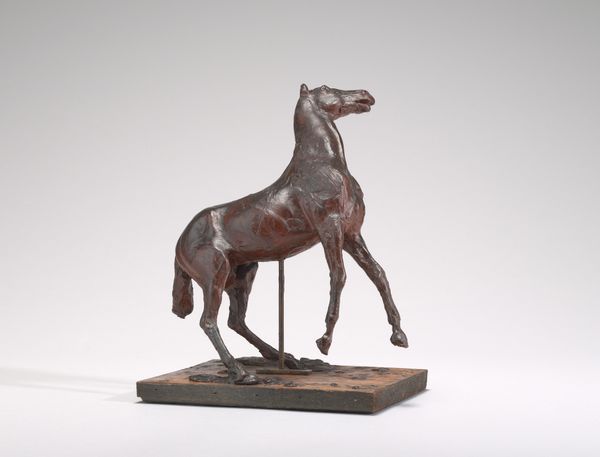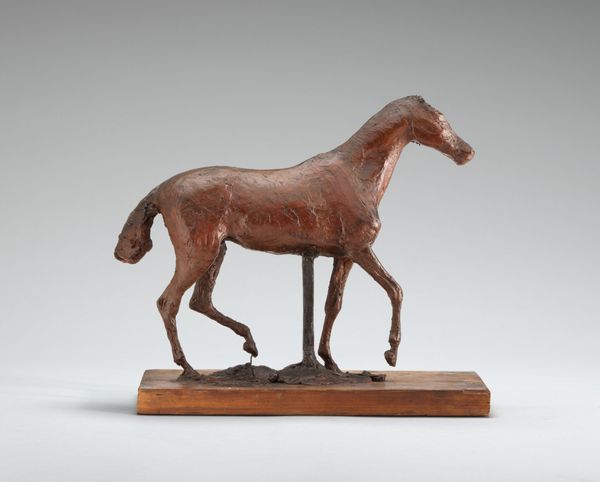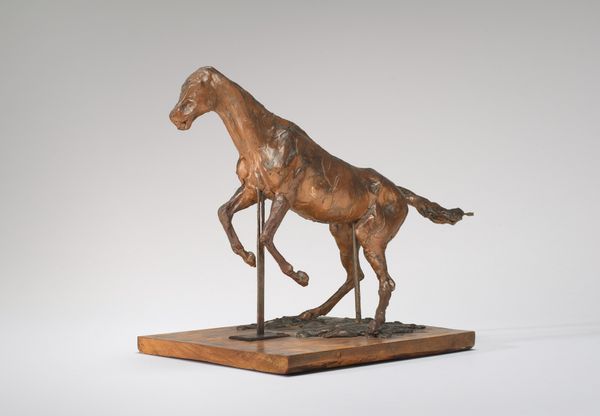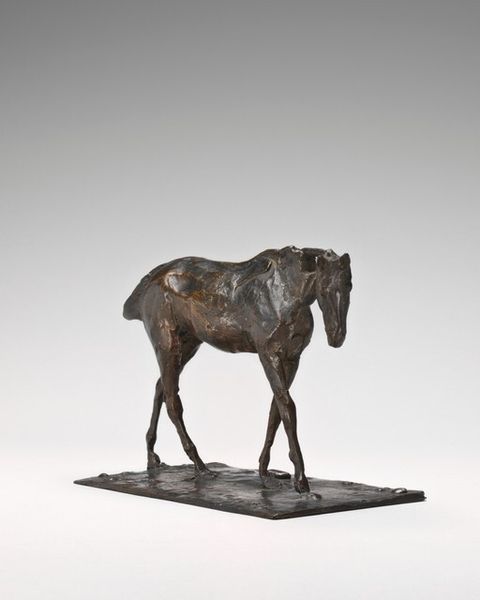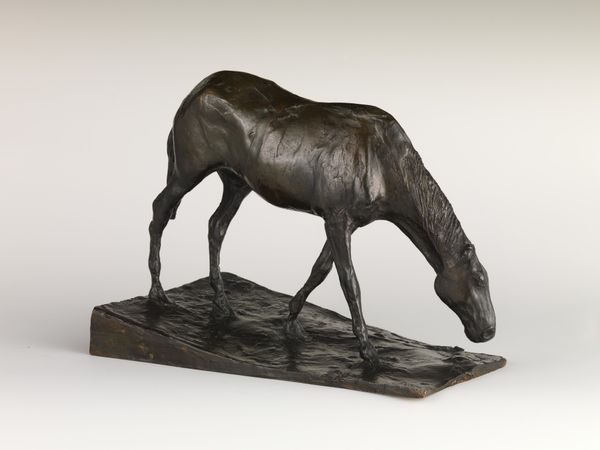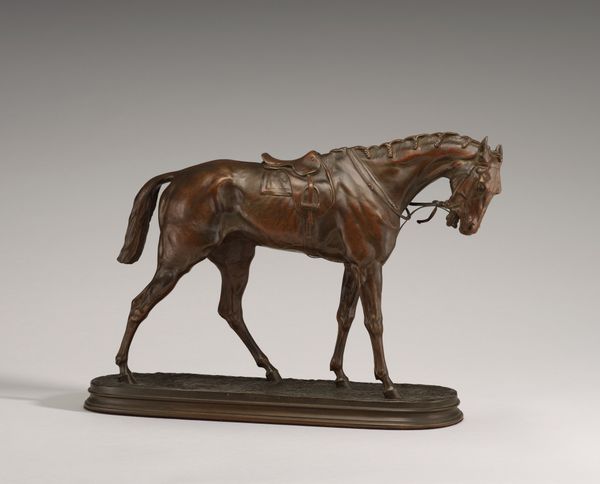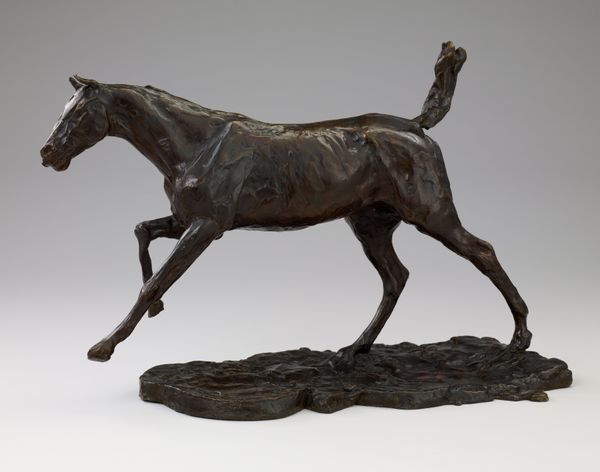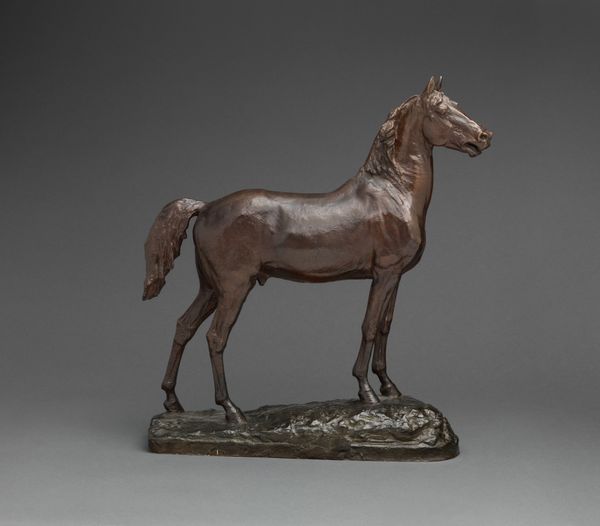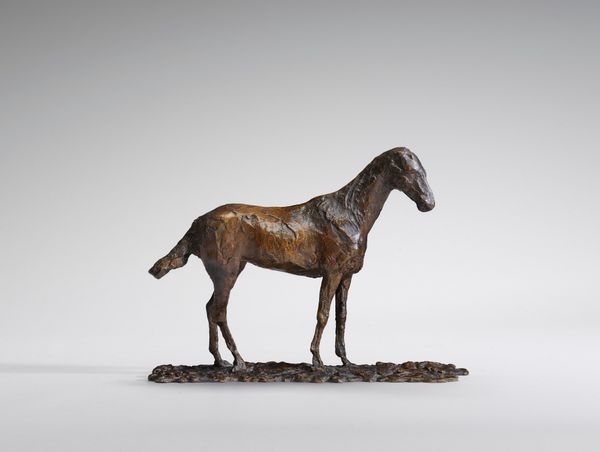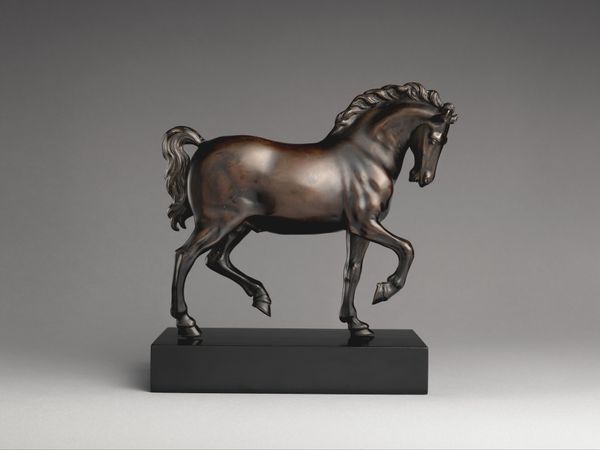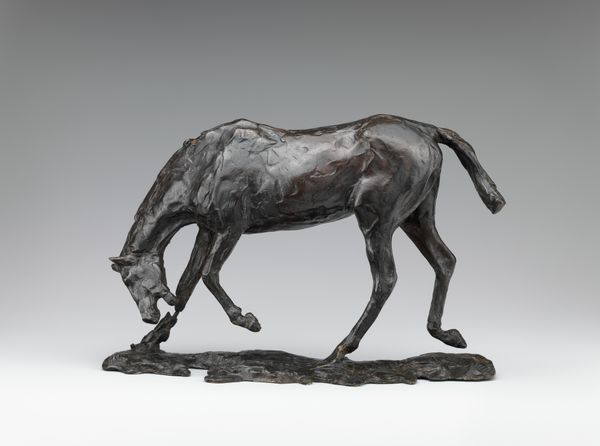
Dimensions: overall with base: 21 x 9.7 x 26.7 cm (8 1/4 x 3 13/16 x 10 1/2 in.) height without base (of horse): 20.5 cm (8 1/16 in.)
Copyright: National Gallery of Art: CC0 1.0
Editor: So, here we have Degas' bronze sculpture, "Horse Walking," dating from around 1870 to 1921. It’s striking how the rough texture of the bronze captures movement. What draws your eye when you look at this piece? Curator: Well, immediately I consider the social context surrounding its creation, right? Bronze casting at this time was hardly a working-class activity. We need to ask ourselves about the industry required. Who were the foundry workers who translated Degas’s wax model into this enduring form, and what were their working conditions? Editor: That’s a really interesting angle I hadn't considered. I was focusing on the art historical importance within Degas' larger body of work. Curator: But the labor *is* the art! Look at the facture - the marks left by the artist’s and, presumably the foundry workers’, hands. Each touch, each tool mark is a record of production. Also, why bronze? It implies permanence, of course, but it also speaks to a certain level of access, capital, right? Who could afford such an object, and what does it say about the social hierarchies of the time? Editor: So you're thinking about the economics of artmaking during that period. How the means of producing such an object impacts its interpretation and significance? Curator: Exactly! The sculpture isn’t just about capturing the animal's likeness; it’s a product of a very specific set of material conditions and social relationships. By considering them, we gain a richer, more critical understanding of the work's place in the world. Editor: That’s really shifted my understanding. It makes you realize how much labour goes into even a seemingly simple bronze casting like this. Thanks! Curator: My pleasure. Thinking materially opens up a whole new world of artistic and societal questions!
Comments
No comments
Be the first to comment and join the conversation on the ultimate creative platform.
